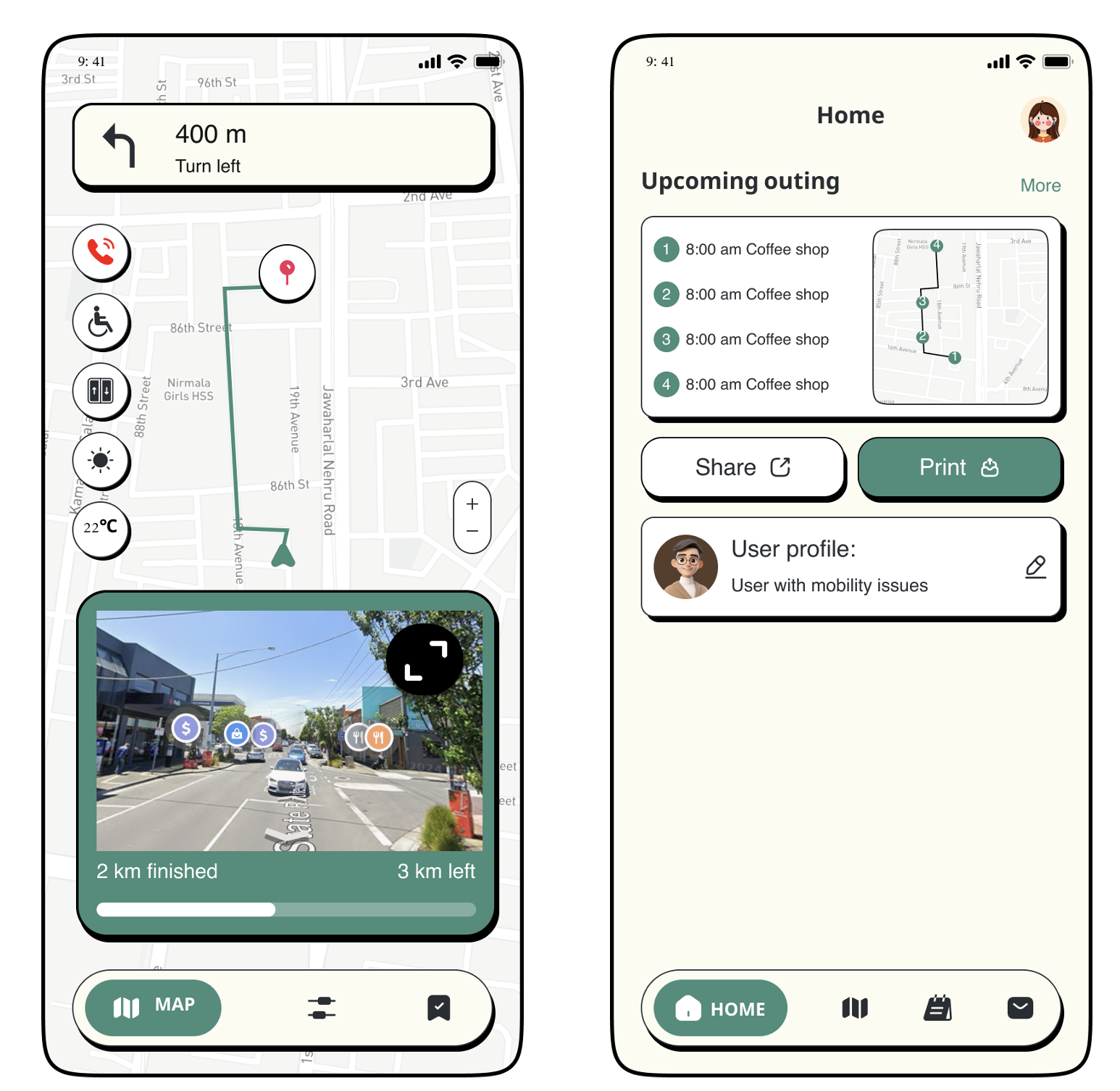Design Way Finding Systems for Cognitive Impairments
👤 Investigator
- Dr Anuradha Madugalla - Deakin Univeristy, Melbourne, AU
- Prof John Grundy - Monash Univeristy, Melbourne, AU
- Prof Charmine Härtel - Monash Univeristy, Melbourne, AU
- Dr Paul McIntosh- Monash Univeristy, Melbourne, AU
📝 Publications
🔍 Background
Effective navigation and spatial information interpretation are essential for daily activities in our increasingly complex and information-rich environments. Whether determining one’s location within a building or finding the fastest route across a city, wayfinding plays a crucial role in personal autonomy and mobility. This process involves a complex interaction of cognitive skills, environmental awareness, and the use of technology. However, for individuals with cognitive impairment (IwCI), this situational awareness and navigation process can pose very significant challenges, as such impairments can affect memory, spatial reasoning and decision making, making navigation a daunting task. This research seeks to fill these gaps by examining the navigation requirements and challenges encountered by IwCI and their carers, and exploring ways to support the shared presence of multiple stakeholders in wayfinding decisions, involving health professionals, support workers, and caregivers.
🔍 Motivation
Digital Navigation Tools
- Lack pedestrian/accessibility details
- Visual/gesture-based interfaces exclude some users.
- Complex instructions require strong spatial skills.
- Universal Design Gap: One-size-fits-all approach ignores diverse needs
Challenges for IwCI
- Difficulty recalling routes, learning environments, making decisions.
- Poor spatial orientation and landmark recognition.
- Limited research on IwCI; extensive focus on visual impairments
- Wayfinding influenced by caregivers and social interactions. Minimal research on collaborative navigation and societal barriers.

📊 Methodology

User study
We employ a mixed-method approach to enable us to explore various aspects of key challenges of navigation software for IwCI and their carers, and key requirements and design principles for more inclusive navigation software. Our surveys and interviews capture the ’what’ via quantitative data and the ’why’ and ’how’ through qualitative data.
- Interview: Our interviews involved a total of 15 interview participants. The interview cohort consists mainly of 25-54-year-olds (93%), with 80% female participants, mostly from Victoria (93%). Support workers (60%), caregivers, and health professionals (13% each) dominate the sample. Experience ranges from 4 months to over a decade. Participants care for individuals with autism (87%), epilepsy (80%), and other cognitive impairments, reflecting a diverse and experienced group.
- Survey: Our survey received 80 valid respondents and participants had a diverse demographic profile. Most of the participants (78%) indicated having between 1 and 10 years of experience with IwCI, averaging 4 years within this range. Professionally, health professionals constituted the largest group (63%), supplemented by support workers (19%) and caregivers (13%), highlighting a wide spectrum of roles involved in the care of IwCI.
🧩 Design recommendations
Design recommendations for navigation software for IwCI 
Design recommendations for navigation software for caregivers and support workers 
📲 Prototype design

📲 Prototype Evaluation
ongoing
